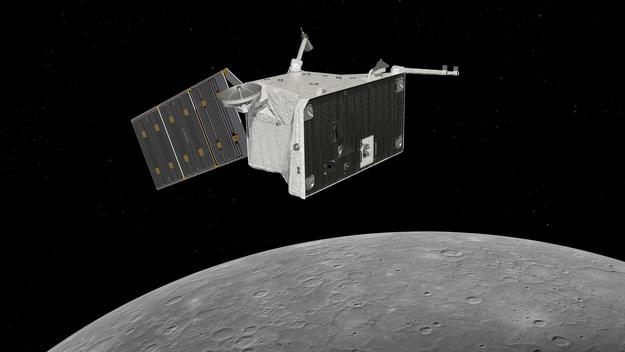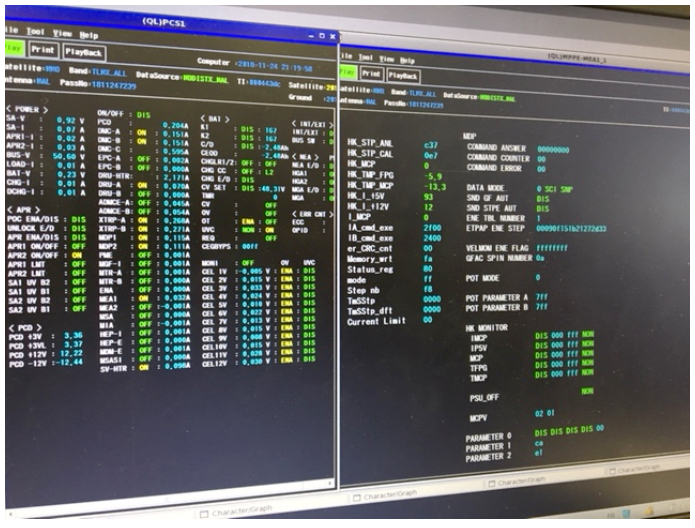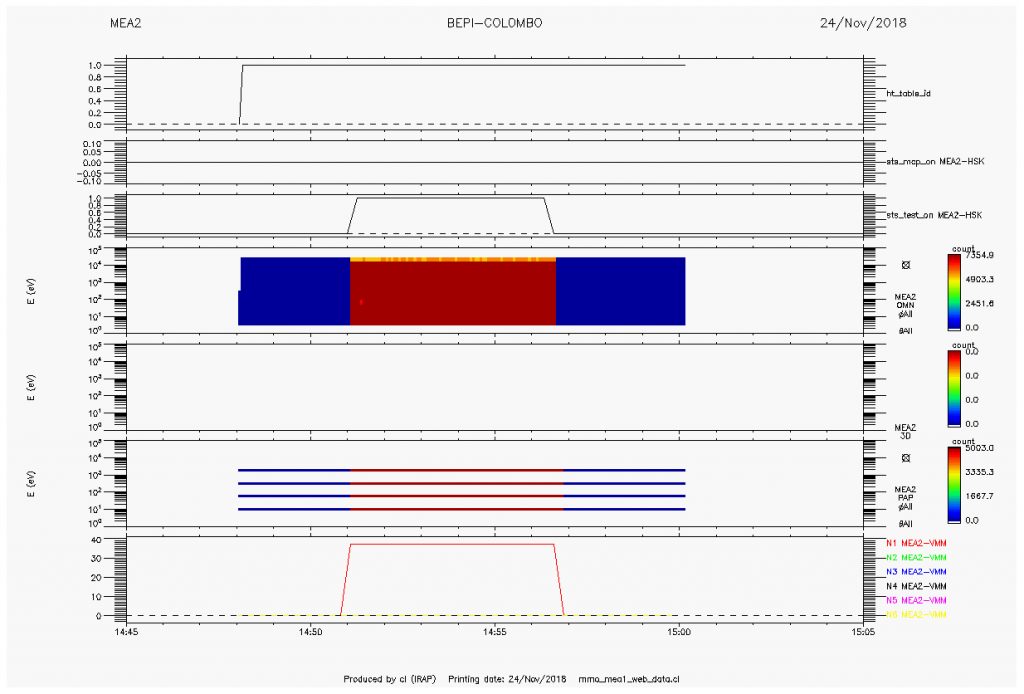Successful test of the MEA Electron Analyzers on the BepiColombo/Mio probe
The first phase of the commissioning of the MEA electron analyzers on the BepiColombo/Mio probe went perfectly. The two instruments were switched on for the first time on Saturday 24 November for 3 hours under the close supervision of the IRAP researchers and engineers at the European Space Agency’s operations centre in Darmstadt, Germany. The BepiColombo mission was then more than 11 million km from Earth.
The purpose of this first power-up was to check the good health of the two analysers after launch and the good communication between the satellite, the data processing unit (“DPU”) and the latter.

The first figure below represents the first auxiliary data (“housekeeping”) of the MEA1 electron analyzer once it is switched on (left, yellow, ON), allowing to check its good health (right, green, current values and temperatures of the electronics and detectors embedded in the instrument).

The second figure below shows the data of the MEA2 analyzer once the test mode is activated, which allows to check after injection of a signal (simulated scientific data) that the 16 sectors of the instrument count well.

The MEA electron analyzers have been put on standby again for 6 months, until summer 2019, when the second phase of the more critical in-flight recipe will take place, with the first ignition of the electron analyzers’ high voltages and the first real scientific data this time.
IRAP Contact
- Nicolas André, nicolas.andre@irap.omp.eu






